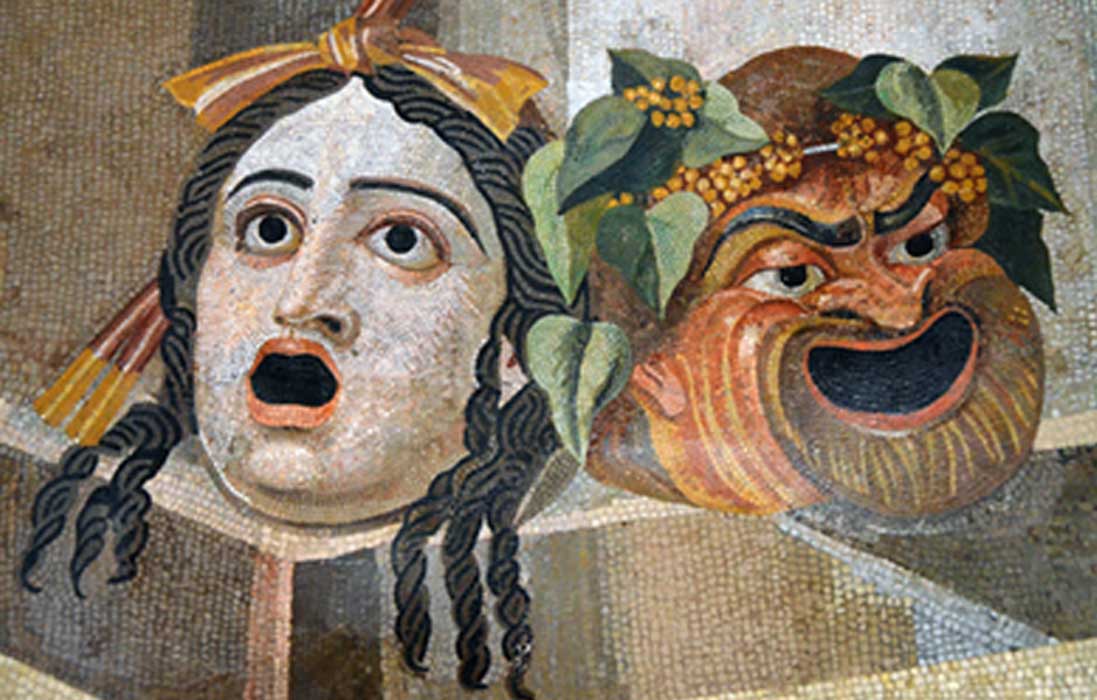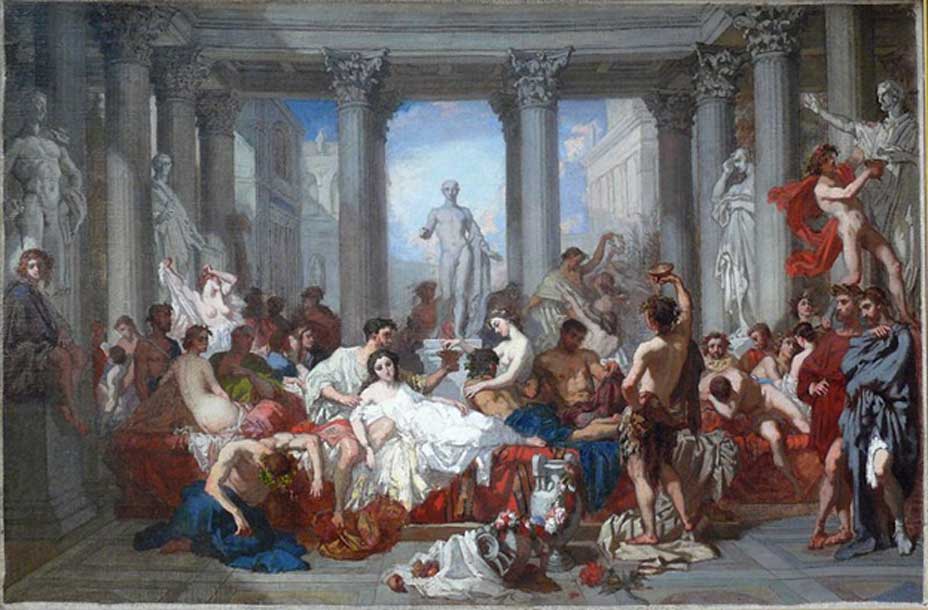
The Black Sheep of the Empire: Actors and Actresses in Ancient Rome
The ancient Greeks loved the theater and ancient Greek actors enjoyed a position of eminence and respect. In contrast, although entertainment and drama were similarly adored in Ancient Rome, theater performers were often demeaned by the upper-class society and also perceived as morally unclean. The emperor Tiberius, who ruled Rome from 14 to 37 AD and not the most morally upstanding man himself, urged those of high society and theatrical performers to avoid interacting with one another. Later, Julian the Apostate, who ruled from 361 to 363 AD, would prohibit pagan priests from attending the theater so that the actors and the theater itself did not receive any form of elevation in status, because of their attendance. The Roman Empire then, placed itself in a peculiar position of admiring the performing art yet, at the same time, viewing the theater as a symptom of the degradation of society and the stubborn attachment of the people to it, as the worst social curse of the Empire.

Mosaic depicting masked actors in a play: two women consult a "witch". Roman mosaic from the Villa del Cicerone in Pompeii, now in the Museo Archeologico Nazionale (Naples). (Public Domain)
“Unhappy Slaves of a Cruel Voluptuousness”
The church tried to ‘release these unhappy slaves of a cruel voluptuousness’. By the time of Valentinian I, who reigned from 364 to 375 AD, the church had gained considerable grounds in ‘rehabilitating’ performers and introducing them into respectable society. An actress who, on her death bed, asked for and received the last sacraments, had to promise to never return to her ‘hateful’ theatrical life in case she recovered. A law, which was probably devised by Saint Ambrose in 380 AD, demanded that actresses who did not profess Christianity, had no hope for release from the theater. Another law was passed a year later which promulgated that any actress who had secured her freedom from the theater by professing Christianity but later relapsed, would be recalled to theatrical servitude for the rest of her life. The harsh tone of the language of this law shows a contempt for a class whom society punished viciously. In 394 AD, Emperor Theodosius I banished all pictures of theatrical performers from the vicinity of his own ‘sacred’ statues. However, although the position of the acting class was never essentially changed, there were always particularly gifted artists, who occasionally rose above their station and enjoyed the friendship of people of high standing.

Romans of the Decadence by Thomas Couture (1847) (CC BY-SA 3.0)
Born to the Stage
Ancient Roman citizens began including theatrical games following the devastation of a widespread plague in 364 BC. The games were originally meant as a supplement to the Lectisternium (an ancient Roman propitiatory ceremony, which consisted of a meal offered to gods and goddesses) being performed to intensify the Romans’ efforts in pacifying the gods. Years later, citizens introduced professionally performed drama to the eclectic offerings of the Ludi (public games) held throughout each year. The largest of these festivals was the Ludi Romani which were held every September in honor of Jupiter. It was as a part of the Ludi Romani in 240 BC that Livius Andronicus became the first playwright to produce translations of Greek plays to be performed on the Roman stage.
The first actors who appeared in Roman performances were originally from Etruria, a region of Central Italy, located in an area that covered part of what are now Tuscany, Lazio, and Umbria. This tradition of foreign actors would continue in Roman dramatic performances and led to many disadvantages associated with the profession. As the actors themselves were foreigners, captives or slaves who could later buy their freedom through their theatrical skills, they were denied the same political and civic rights that were afforded to ordinary Roman citizens, because of their perceived low social status. The exemption of actors from military service, further inhibited their rights in Roman society as it was impossible for an individual to hold any form of political career, without having some form of military experience.
- Sex and the Roman Empire: Scandalous Literature about Empresses Euphemia and Theodora
- Little Emperors and Their Regents: Child Rulers & the Supportive and Destructive People Behind Them
- The Ancient Beginnings of the Art of Shadow Puppetry
As it was traditional in Roman society that children would take up the profession of their parents, ancient Roman actors were often born into the profession. However, not everyone in Rome could become an actor. Even in the ancient world actors were required to have a certain physical presence and ability. Stage acting required actors to use grand gestures to accompany and emphasize their speeches. Strong voices and stamina were also required as their voices needed to carry for long periods of time in the open-air amphitheaters. Being an actor also required a strong musical ability, not only because songs were often involved in performances, but because they often had to exchange their lines rhythmically due to the musical nature of their performance.
Despite all these considerations and demands required of the average ancient Roman actor, due to the common opinion that spending too much time at the theater was detrimental to a populace’s character, there were generally no permanent theaters in Rome where actors would perform until 55 BC. The standard design for Roman theater costumes was a long robe called a chiton. A himation, which was made of heavier drape and commonly used as a cloak, was usually worn over a chiton. The chiton and himation were often colored to denote a character’s gender and rank - a rather handy practice, as in the early Roman theater the female characters were originally played by men, although eventually female slaves took the roles of women in plays. The color coding enabled the audience to recognize the characters and their status from the colors that they wore. For example, a purple costume identified a rich man, while boys wore striped togas. Soldiers wore short cloaks, poor men wore red, and women would wear yellow robes. A short tunic indicated a slave, while a yellow tassel indicated that the character was a god. Roman actors also wore cheap and simple sandals called the baxa, made from vegetable leaves, twigs, and fibers. The soles of the shoes were made of woven palm leaves and the strap of the baxa was made from palm and vegetable leaves in a style similar to modern day flip-flops.




